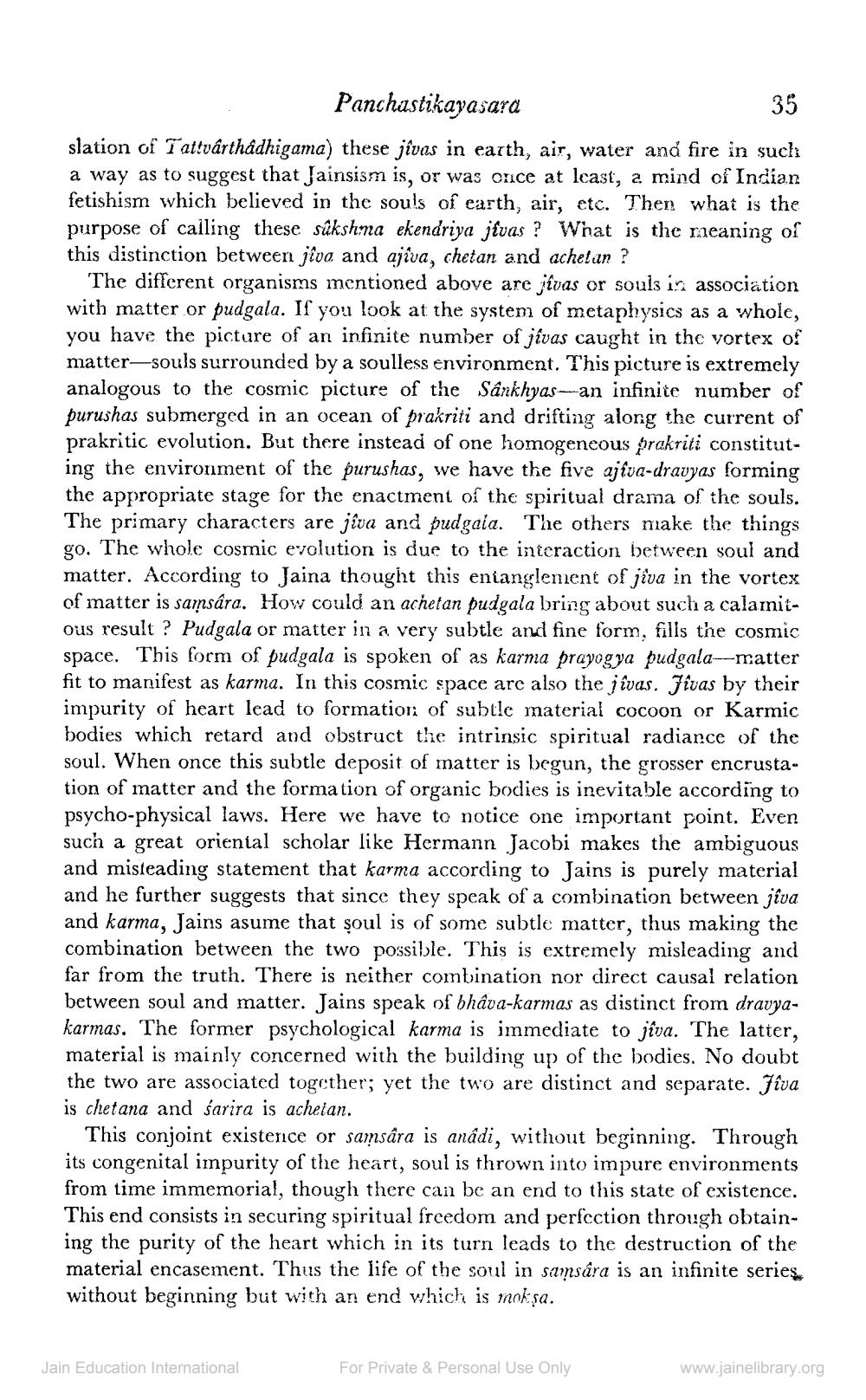________________
35
Panchastikayasara slation of Tattvärthadhigama) these jivas in earth, air, water and fire in such a way as to suggest that Jainsism is, or was once at least, a mind of Indian fetishism which believed in the souls of earth, air, etc. Then what is the purpose of calling these sûkshma ekendriya jîvas ? What is the meaning of this distinction between jîva and ajiva, chetan and achetan?
The different organisms mentioned above are jivas or souls in association with matter or pudgala. If you look at the system of metaphysics as a whole, you have the picture of an infinite number of jívas caught in the vortex of matter-souls surrounded by a soulless environment. This picture is extremely analogous to the cosmic picture of the Sânkhyas--an infinite number of purushas submerged in an ocean of prakriti and drifting along the current of prakritic evolution. But there instead of one homogeneous hrakriti constit ing the environment of the purushas, we have the five ajfva-dravyas forming
ppropriate stage for the enactment of the spiritual drama of the souls. The primary characters are jîva and pudgala. The others make the things go. The whole cosmic evolution is due to the interaction between soul and matter. According to Jaina thought this entanglement of jiva in the vortex of matter is samsára. How could an achetan pudgala bring about such a calamitous result ? Pudgala or matter in a very subtle and fine form, fills the cosmic space. This form of pudgala is spoken of as karma prayogya pudgala---matter fit to manifest as karma. In this cosmic space are also the jîvas. Jivas by their impurity of heart lead to formation of subtlc material cocoon or Karmic bodies which retard and obstruct the intrinsic spiritual radiance of the soul. When once this subtle deposit of matter is begun, the grosser encrustation of matter and the formation of organic bodies is inevitable according to psycho-physical laws. Here we have to notice one important point. Even such a great oriental scholar like Hermann Jacobi makes the ambiguous and misteading statement that karma according to Jains is purely material and he further suggests that since they speak of a combination between jîva and karma, Jains asume that soul is of some subtle matter, thus making the combination between the two possible. This is extremely misleading and far from the truth. There is neither combination nor direct causal relation between soul and matter. Jains speak of bhava-karmas as distinct from dravyakarmas. The former psychological karma is immediate to jiva. The latter, material is mainly concerned with the building up of the bodies. No doubt the two are associated together; yet the two are distinct and separate. Jiva is chetana and sarira is achetan.
This conjoint existence or samsára is anádi, without beginning. Through its congenital impurity of the heart, soul is thrown into impure environments from time immemorial, though there can be an end to this state of existence. This end consists in securing spiritual freedom and perfection through obtaining the purity of the heart which in its turn leads to the destruction of the material encasement. Thus the life of the soul in samsára is an infinite series, without beginning but with an end which is mokşa.
Jain Education International
For Private & Personal Use Only
www.jainelibrary.org




